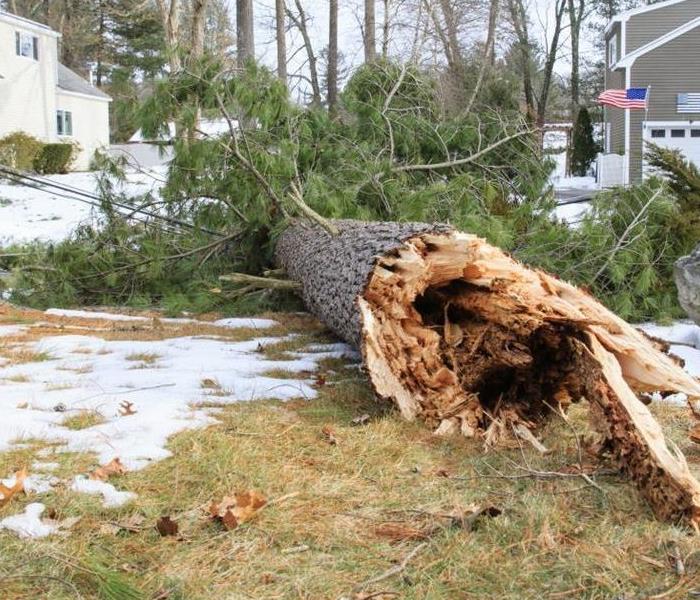One Landscaping Trick to Limit Storm Damage in Marlton/Morningside
6/3/2021 (Permalink)
Storm damage is often unexpected and incredibly inconvenient. While no one can control the weather there is one very easy "trick" you can do to help limit the amount of damage a storm may cause! Below we will explore how pruning can prevent storm damage and some best practices to follow while pruning!
Pruning limits the amount of debris a potential storm can blow into your property as well as gives you a chance to inspect a tree for health and potential hazards.
Before and while pruning, make sure to look for these signs of a potential hazard:
- Cracks in the trunk or major limbs.
- Hollow trunk (or mushrooms growing from the bark, indicating decay)
- Heavy leaning to one side or the other
- Branches hanging over the house near the roof.
- Limbs touching live power lines.
- V-shaped forks rather than U-shaped ones. V-shaped are more likely to split.
- Branches that cross and interfere with each other.
These are signs that the tree may pose a greater threat to your residential or commercial structure and may need to be cut down.
Now, while pruning it is important to:
- Avoid pruning branches that are flush with the trunk. This could expose trunk wood, opening the tree up to possible decay or insect damage.
- Begin by making a cut partway through the bottom of any limb to be trimmed, a few inches from the trunk. Then cut through the limb just above the first cut. This ensures that when the limb falls, it will not tear a long strip of bark on the way down.
- Finish by cutting off the few inches sticking out from the trunk. Leave the “branch collar,” the swollen area of trunk tissue that forms around the base of a branch. Keeping the branch collar protects the main trunk from damage.
After a storm, prune a tree just enough to balance the loss of roots. Cut out broken, diseased and malformed branches to give the tree a desirable shape. Continue to care for them to help them get healthy again.
Following these pruning tips will help limit storm damage, however, nothing can eliminate the threat of storm damage completely! If your residential or commercial building has suffered any storm damage give us a call here at SERVPRO of Marlton/Morningside at (301) 856-5402 and we will handle the mess quickly, professionally, and with great customer service!





 24/7 Emergency Service
24/7 Emergency Service
